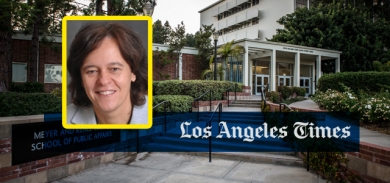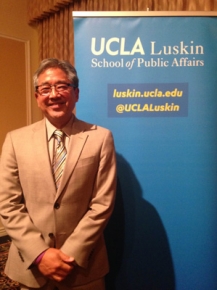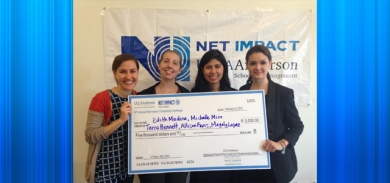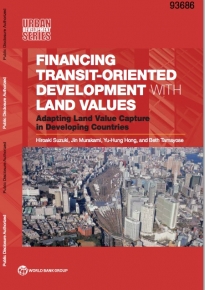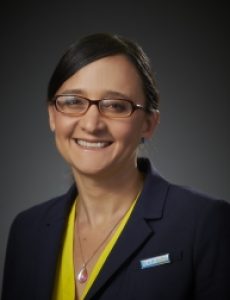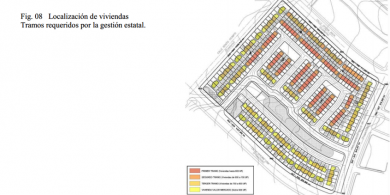After Academic Career, Professor Writes for Kids Emerita Social Welfare profesor Diane de Anda has established a post-instructional career as an author of bilingual children's books.

When she was younger, Diane de Anda recalls listening to stories from her grandparents about the Mexican revolution and other historical events they had lived through. After working as a professor and researcher in the department of Social Welfare at UCLA Luskin, she decided it was time to go step away from her academic roots and focus on creative writing, submitting short stories and poetry for publication in various literary journals.
In addition, de Anda has become an award-winning author of several works for children, including The Patchwork Garden and A Day Without Sugar. She also writes satirical pieces about current political and social issues that are published in the Humor Times and Satire and Comment.
Before becoming a professor at UCLA, de Anda’s experience as a junior high school teacher for the Los Angeles Unified School District inspired her to work with youth, drawing her into the field of social welfare with a focus on issues related to young populations and families, particularly in the Latino community.
“Most people don’t like teaching junior high students, but I adored them,” de Anda said. “They were at a very critical point in their lives. I think if you catch potential problems (at that age), they have a chance for more productive adult lives. Working with youth seemed like a hopeful kind of thing to do.”
Though she enjoys writing creatively, she doesn’t think this has to compromise her academic work. She continues to contribute to the social welfare literature and also spends time discussing research with former doctoral students and faculty members.
“I love research and its intellectual challenge. I invite present and former doctoral students and faculty members to my house where we have dessert and share ideas about research,” de Anda said. “Research is an intellectual endeavor that should not be limited to the classroom; rather, intellectual exchange should be part of your life as a whole.”
During her time as a professor, she taught subjects including cognitive behavior, adolescent behavior, cross cultural awareness and research at the master’s and doctoral levels. De Anda formulated the concept “bicultural socialization,” and her best-noted research focused on adolescent pregnancy and motherhood.
Her passion for social work and working with adolescents has extended beyond her work in academia. De Anda has consulted and volunteered for organizations that provide services to disadvantaged youth, such as the Human Services Association and El Nido Family Centers, among others. Her focus in this work has been on stress and coping, violence prevention, and adolescent pregnancy and STD prevention in Latino youth.
Rosie Ramos, the director of the Pasitos Early Head Start program at the Human Services Association, and a 10-year colleague of De Anda’s, spoke highly of de Anda’s dedication to the subject.
“She is a very hard working and genuine person, very dedicated and most caring about what happens to teens and pregnant mothers, “ Ramos said. “I have a great deal of respect for her and the work that she does.”
De Anda said what she enjoyed most during her time as a professor at UCLA was interacting with her students. After retirement, she has kept in touch with many former doctoral students, advising and encouraging them to publish their own research.
“I find speaking with students the most rewarding both personally and intellectually. They were always challenging and interactive in my classes,” she said.
Susan Snyder was a student in de Anda’s courses on cultural competence and cognitive behavior theory. She was part of Snyder’s dissertation committee and helped her edit her manuscripts.
“Dr. de Anda provided the most feedback I have ever received on papers,” Snyder said. “Even though my dissertation was over 100 pages, she provided comprehensive feedback on each page.
“She has a way of teaching that energizes students and makes learning engaging, bringing energy and passion in a way that few can master,” Snyder added.
Though Snyder said de Anda’s courses were the most difficult she had, she said her impact in academic life and the larger community inspired Snyder to pursue a career in academia.
“Dr. de Anda is compassionate, generous and tireless. She is incredibly brilliant and able to analyze complex problems with ease. She also is a phenomenal writer,” Snyder said. “More than anything Dr. de Anda believes in ensuring that each person is treated with dignity and respect. She is a stalwart advocate of social justice.”
In the future, de Anda said she hopes to continue working with doctoral students at UCLA, helping them with their writing as well as publishing her own collection of short stories for adults and the additional children’s books she has written, including a collection of 80 animal limericks and a book of nonsense poems for young boys.
